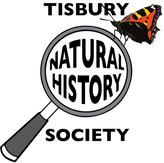|
Leif Bersweden was brought up near here so visiting us last month was, appropriately enough, something of a return to his roots. A bright, engaging speaker, he was bursting with enthusiasm for his subject.
He set about the topic by describing how he became interested first in animals and then in plants and flowers as a boy, and went on to describe the journey he recently made across the whole of the British Isles, largely on bicycle, to explore the range of plants that grow here, their habits and their habitats. He travelled as far west as the lizard Peninsula in Cornwall, as far east as the South East corner of England, at Deal in Kent, via the Norfolk Broads and Scarborough in Yorkshire, as far north as the Shetland Isles, and across the island of Ireland to sites in both Derry in the north and Cork in the far south west. Much of his talk was made up of descriptions of the sights and specimens he found most amazing; some that we may consider familiar such as the glorious spring-time carpets of bluebell woods on the South Downs or in Hampshire; or the unfamiliar characteristics of common plants such as the fact that Lords-and-ladies is capable of generating heat; or the truly unexpected carnivorous greater bladderwort, growing in the Norfolk Broads. Leif’s sheer delight at all of these was truly infectious; a delight to listen to. The background, of course, which he did not shy away from, is that wildflower populations are threatened everywhere, by population growth, changes in agricultural practices and intensity, and by climate change. And the familiarity people used to have with wild plants in their locality, their names, their uses, has largely disappeared. But there were light hearted touches, too, such as the anecdote he told of how embarrassed he was when apprehended, camera in hand, while taking pictures of a particular plant native to a coastal sand-dune, by a couple of members of the nudist colony that also occupied the area. Overall Leif’s message was determinedly up-beat. Our wildflower heritage is something wonderful and to be cherished. He filled his audience with enthusiasm and pleasure that reflected his own – and sold a fair number of copies of his recently published book as a result! by Richard Budden Comments are closed.
|
Photo: Avocets (Izzy Fry)
The headers display photos taken by our members. Do get in touch via the Contact Form if you'd like to submit a photo for selection.
Archives
May 2024
Categories
All
|

 RSS Feed
RSS Feed